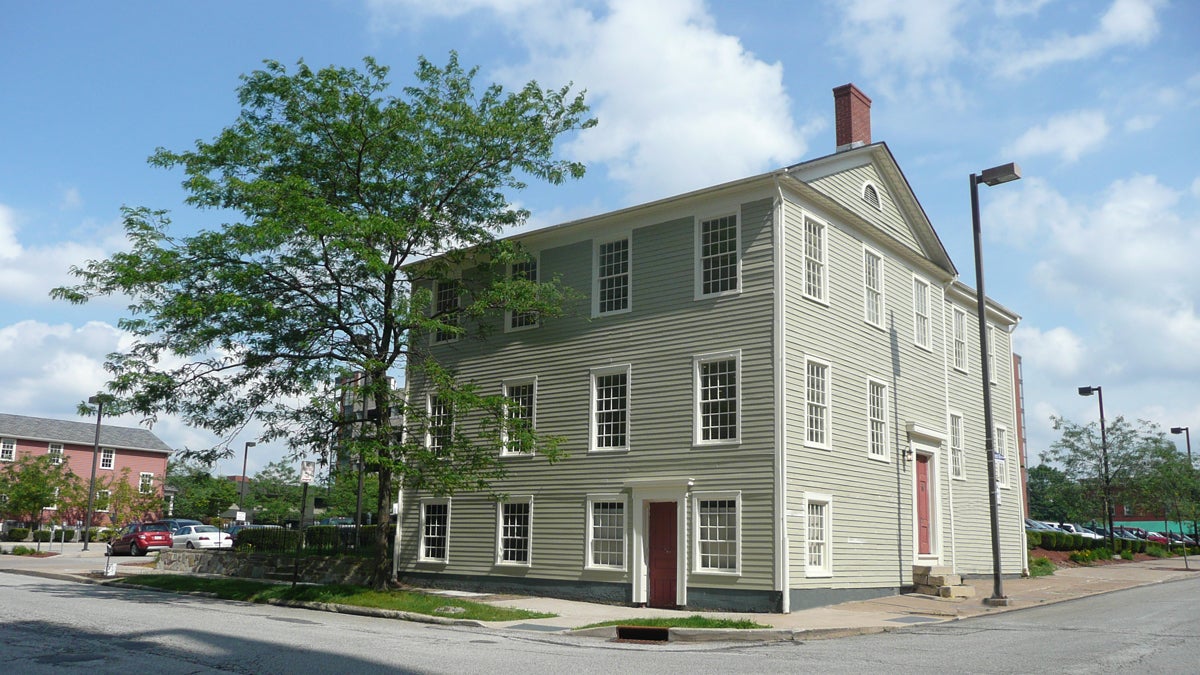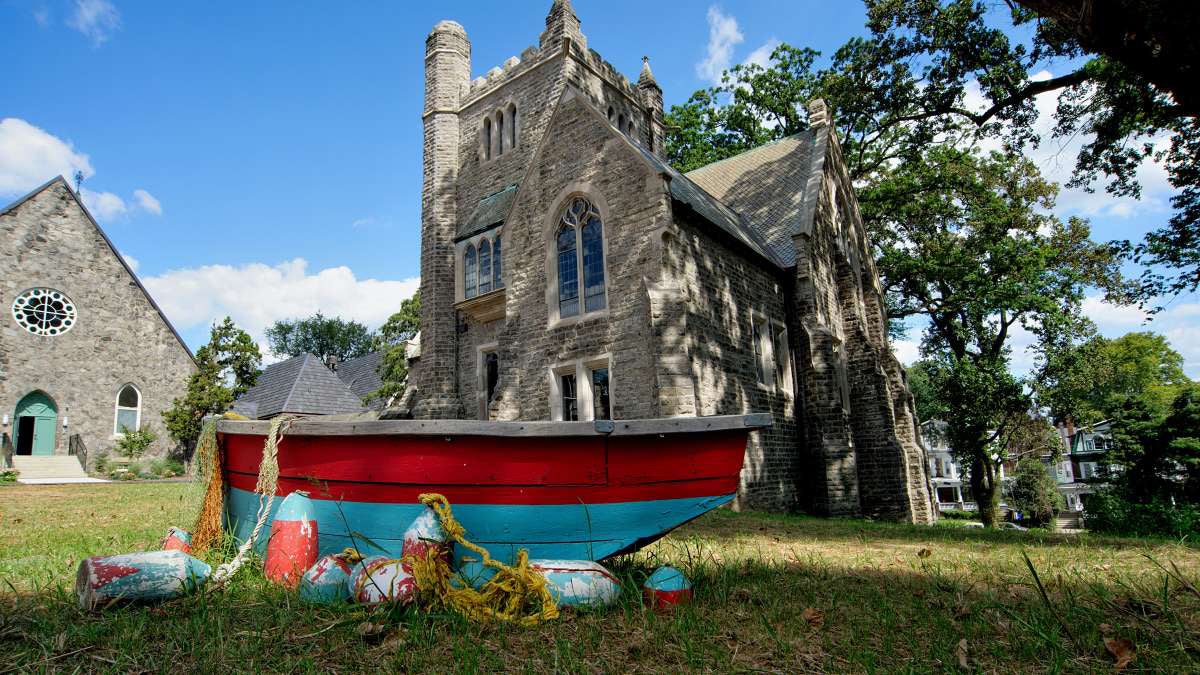Preservationists praise state tax credit program, but hope for more

The Dickson Tavern
At the start of each fiscal year, the Department of Community and Economic Development has awarded applicants in the five regions of Pennsylvania tax credits totaling $3 million.
Dozens of historic buildings in Pennsylvania — from an 1815 tavern in Erie to a Frank Furness church in Philly to an early 20th century YMCA in Pittsburgh — have been saved thanks to a tax credit program established by the commonwealth in 2012.
The program serves as an incentive to developers to preserve structures that define the character of their cities by easing the financial burden of rehabilitating, rather than demolishing, older structures.
At the start of each fiscal year, the Department of Community and Economic Development has awarded applicants in the five regions of Pennsylvania tax credits totaling $3 million. The credits have ranged from $13,000 to $500,000, depending on the size, need and impact of the project. The 16 projects that received tax credits in fiscal year 2015-16 generated an estimated $102 million in private investment.
Preservationists say the state tax credits are one of the most important tools used by the government to protect historic buildings.
Yet Pennsylvania’s tax credit program took 16 years of advocacy efforts to pass the General Assembly, and the $3 million cap is among the smallest in the nation and has not been increased since it was established.
“One of the biggest hurdles with the state tax credit program is that there is just not a lot of money devoted to it,” Patrick Grossi, advocacy director at the Preservation Alliance for Greater Philadelphia, said. “If you have a half-dozen significant projects, that money’s not going to go very far.”
Funding battle
Leading the fight to establish the state tax credit program was Preservation Pennsylvania, which waged battles in every two-year legislative cycle for 16 years. The organization used various strategies and arguments to convince members of the state legislature to embrace the idea. “The bill would always move, then get to the final vote in the Senate and die,” said Mindy Crawford, executive director of the private nonprofit group. “We could have been one of the first states” to pass a tax credit program. “We turned out to be one of the last.”
Pennsylvania was the 30th state to adopt a historic tax credit program. There are currently 34 states that have such programs, and they vary greatly. Minnesota has no cap on its program, and others have caps of $50 million per year. Advocates point to Maryland, Ohio and Virginia as excellent models for the impact and number of projects completed thanks to their tax credit programs.
In Pennsylvania, the opposition to passage had not been to the program itself, Crawford said. But during one of the years in the process, a provision was placed in the Growing Greener legislation that said if the funding to support historic tax credits was not approved, the money would be redirected to Pennvest, the state authority that directs investment in improving water quality. “They weren’t against the tax credit program, but there was strong support for Pennvest,” Crawford said. “We finally got around that. When the last bill was introduced and passed in 2012, we had a specific line that said the money would not be otherwise directed to Pennvest, but would come out of the General Fund.”
The goal had been to establish a $10 million cap for the Pennsylvania tax credit program, “but in last-minute negotiations it was reduced to $3 million,” Crawford said. “In the scheme of things, that’s not a lot of money.”
Doling it out
Pennsylvania’s historic tax credits are administered by the DCED, which evaluates rehabilitation projects on an individual basis by region and works “to incentivize as many projects as possible within each region through the tax credit award process,” Heidi Havens, deputy communications director at DCED, explained in an email.
The program is specifically for developers working on income-producing properties. In its review of applicants, the department looks for “impactful investments and evaluates each based on the amount needed to propel the project across the finish line,” Havens wrote.
DCED has capped each region’s allocation at about $500,000 in tax credits. This year, in order to make the funding available to more projects, the top allocation per project was $250,000.
Distributing the $3 million geographically is a fair and equitable approach, said Crawford, of Preservation Pennsylvania. “That’s a great thing, because tax credits generally get used in big cities. This spreads it around.”
But beyond the limited amount of tax credits available, there are other challenges in the Pennsylvania program.
Scott Doyle, division chief of funding programs at the Pennsylvania Historical and Museum Commission, oversees the team that certifies that each project applying for tax credits involves a historic building or is part of a historic district, and that the proposed rehabilitation meets the standards set by the U.S. Secretary of the Interior.
Once the projects have been vetted by the PHMC, the DCED places the applicants into a pool for the selection process and chooses them in a random lottery. Then DCED determines how much will be awarded to the project.
The state receives two to three times as many applicants than it can assist, so the DCED has a first-come, first-served policy. “That makes it a requirement to submit an application on the opening date of each round,” Doyle said.
Because the selection process is competitive and recipients are chosen randomly, many developers don’t bother to apply, Crawford said. “If you’re doing a project that needs the tax credit program to make it work, you have to wait for the lottery to come around. And if you’re competing in a large market, there’s a good chance you’re not going to get it. There may be many more who need the tax credits, but they’re not going into the process.”
The delay in the passage of the state budget this year pushed the process back further and resulted in a three-week application window, “so the number of applicants went down even more,” she said.
The wide range of projects that have applied for state tax credits have involved investments of $381,000 to $31 million, Doyle said. Based on the state caps, some developers realize the full potential of the tax credits, while others receive a very small percentage.
Success stories
Despite the cap and challenges in the process, the state tax credit program has made possible the preservation of a great variety of historic resources.
In Erie, a small-scale but important project saved the city’s oldest building, the Dickson Tavern, which opened in 1817 and welcomed the Marquis de Lafayette among its guests. The Kidder Wachter Architecture & Design firm purchased the Federal-style building in 2009, and carefully turned the former tavern into its offices.
Tax credits also supported the rehabilitation of Pittsburgh’s East Liberty YMCA, a handsome building designed in 1909. The East Liberty neighborhood underwent “traumatic redevelopment” with well-intentioned urban renewal projects that destroyed the fabric of the community by razing older housing and businesses and led to its decline in the 1970s and 80s, Doyle said. The $250,000 state tax credit awarded to the Ace boutique hotel chain last year helped ensure the transformation of the building into the Ace Hotel and the further stabilization of the neighborhood.

The former YMCA building designed in 1909 in the East Liberty section of Pittsburgh has been reborn as a boutique hotel. (Photo by Ron Larson/Ace Hotel)
The renovation of the massive North Scranton Junior High School was completed a year ago, thanks to state tax credits, Doyle said. The building had been vacant for years, but has now been converted into assisted-living senior housing.
State tax credits were also used in the preservation and adaptation of the former St. Peter’s Episcopal Church, a landmark designed in 1873 by architects Frank Furness and George Hewitt in Philadelphia’s Germantown section, into a campus of the Waldorf School. Developer Ken Weinstein applied for $500,000 in state tax credits for the $6 million renovation, and received $250,000 in credits. “Without it, we wouldn’t have been able to complete some of the work we wanted to do. We could have done more if we’d gotten more, but we were very pleased with what we received,” Weinstein said.
Weinstein applied during the state program’s first year of operation, and he said the process went fairly smoothly. He had previously applied for and was granted federal historic tax credits through the National Park Service, which facilitated the state process. The state program had fewer restrictions than the “convoluted” federal process, he also said.
But the $500,000 cap for the entire Southeastern Pennsylvania region doesn’t seem fair to Weinstein, considering the preponderance of historic buildings and development projects in that region. “My understanding is that when they started the program in 2012, the amount chosen was a placeholder to see how it would work. Now that they’ve seen the positive results, it should be obvious they should increase that $3 million cap,” he said.
The historic tax credits are “incredibly valuable to revive neighborhoods like Germantown,” Weinstein said. “We see real potential in the program.”
 St. Peter’s Episcopal Church, which was designed in 1873 by the preeminent firm of Frank Furness and George Hewitt underwent a $6 million renovation and opened as the Waldorf School last year. (Bas Slabbers/For NewsWorks)
St. Peter’s Episcopal Church, which was designed in 1873 by the preeminent firm of Frank Furness and George Hewitt underwent a $6 million renovation and opened as the Waldorf School last year. (Bas Slabbers/For NewsWorks)
Adding the gravy
Like Weinstein, most developers who apply for the state credits also take advantage of the federal historic tax credit program.
Administered by the National Park Service and the Internal Revenue Service, in conjunction with state historic preservation offices, the federal program provides a 20 percent credit applied to historic buildings. Since 1981, the program has leveraged $109 billion in private investment and supported the preservation of more than 39,600 buildings. The IRS has issued $21 billion in tax credits, while generating more than $26.6 billion in federal tax revenue, according to the National Trust for Historic Preservation.
By comparison, the Pennsylvania effort is “still more or less a nascent program,” said Grossi, of the Preservation Alliance. “The federal program is more established and it’s a greater financial benefit. The state program is almost viewed as gravy on top of a federal tax credit. But that’s only because of the limited resources that are devoted to it at this time.”
Because it is still a relatively new program, Grossi said preservation organizations need to raise awareness of its benefits to developers as well as lawmakers in Harrisburg.
“Our challenge is to make the argument that this tax credit program pays for itself. It has enabled hundreds of projects across the state, and it has prevented buildings from being demolished. It has allowed projects to happen that otherwise would not have happened,” Grossi said.
Crawford said her state organization will be pulling the numbers together and reaching out to Pennsylvania legislators in the coming year in an effort to raise the state cap on historic tax credits. “If we have the economics of it available — the tax generation, job creation, housing units built — we can show that raising the cap to $10 million is not a whole lot for the return on it.”
WHYY is your source for fact-based, in-depth journalism and information. As a nonprofit organization, we rely on financial support from readers like you. Please give today.


